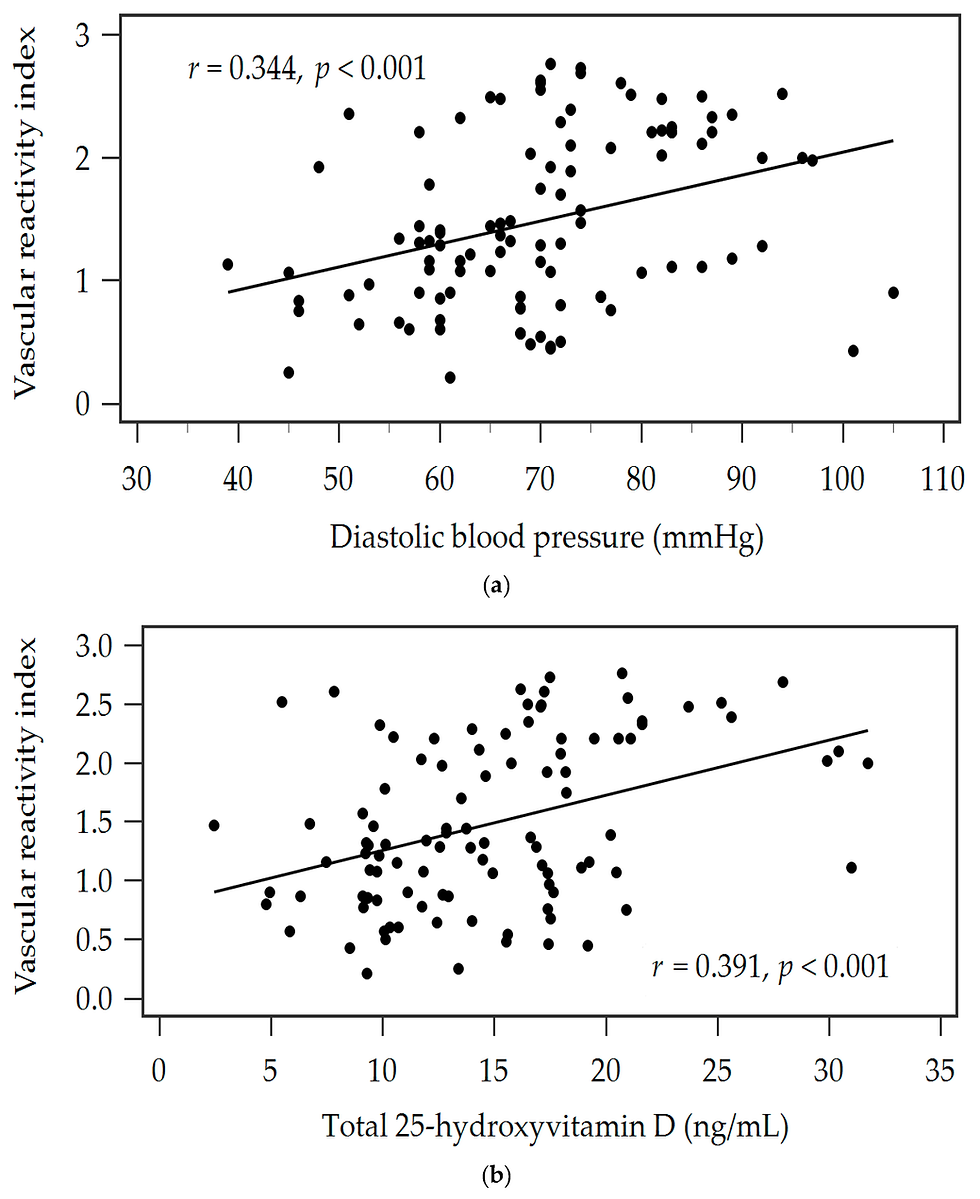Non-invasive digital thermal monitoring and flow-mediated dilation in systemic sclerosis
- heartlung
- Jan 9, 2023
- 1 min read
Tracy M Frech, Maureen A Murtaugh
Clin Exp Rheumatol 2019 Jul-Aug;37 Suppl 119(4):97-101.
Epub 2019 Sep 17
Abstract
Objectives: The fingers, toes, and tips of the nose and ears have specialised structural and functional features for thermoregulation, and are the most common areas of Raynaud's phenomenon in systemic sclerosis. Digital thermal monitoring (DTM) of vascular reactivity assesses Doppler ultrasound hyperemic, low frequency, blood velocity of radial artery and fingertip vascular function. Flow mediated dilation (FMD) is an indirect measure of endothelial function, perfusion, and vasodilator ability. In this study, we investigated the cross-sectional correlation of FMD and DTM variables to inform an optimised noninvasive study of SSc endothelial function. A student's T-test was used to compare means of DTM across binary variables.
Methods: Consented SSc registry patients were included in this analysis. The subjects were prepared for FMD and DTM per standardised guidelines. The SSc clinical features were recorded. Spearman's Rank Correlation was used to assess the strength of a relationship FMD and DTM variables.
Results: Thirty-four SSc subjects had FMD and DTM performed on the same day. Relative (0.42, p=<0.02), absolute FMD (0.41, p<0.02), and shear rate (0.32, p<0.07) were weakly, but significantly correlated with the DTM. Reactive hyperemia (-0.44, p=0.000) was weakly inversely, but significantly related with DTM. Baseline diameter and flow were not significantly related to the DTM.
Conclusions: This non-invasive study of SSc endothelial function suggests that macrocirculation (including relative and absolute FMD, shear rate, and peak hyperemia) and microcirculatory thermoregulation (characterised by DTM) are significantly correlated, thus warrants further prospective study.
Read Full Text Here: https://www.clinexprheumatol.org/abstract.asp?a=14167


![Lipoprotein(a) levels predict endothelial dysfunction in maintenance hemodialysis patients: evidence from [VENDYS] vascular reactivity index assessment](https://static.wixstatic.com/media/dac531_5285607cc591409a9d83746f042af7c6~mv2.png/v1/fill/w_980,h_980,al_c,q_90,usm_0.66_1.00_0.01,enc_avif,quality_auto/dac531_5285607cc591409a9d83746f042af7c6~mv2.png)
Comments